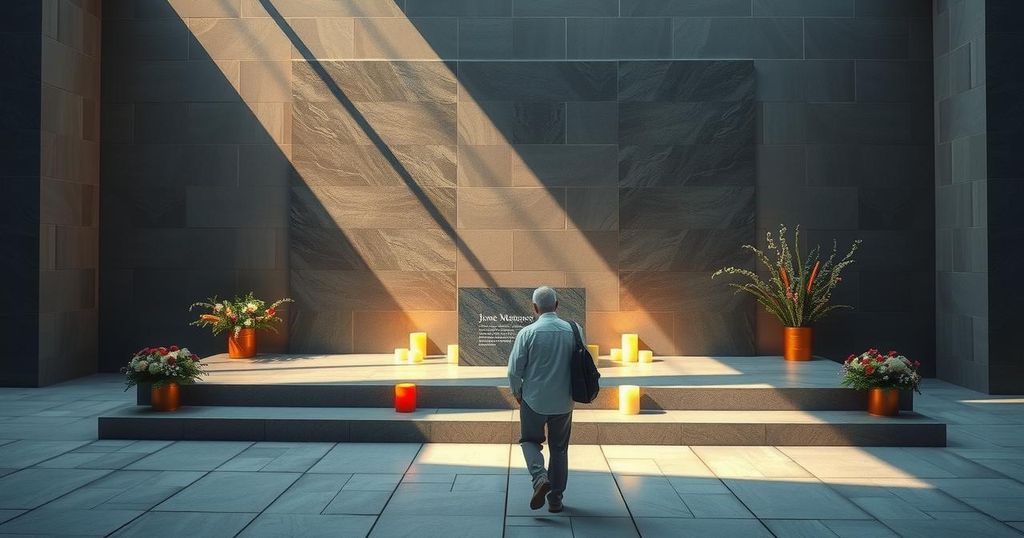Hassan Nasrallah’s funeral drew large crowds in Beirut following his death in an Israeli airstrike. Mourners attended the event at a stadium, commemorating Nasrallah and his successor, Hashem Safieddine. The ceremony highlighted the ongoing tensions between Hezbollah and Israel amidst a backdrop of prior warfare, demonstrating Hezbollah’s continuing influence in the region.
A large gathering took place for the funeral of Hassan Nasrallah, the former leader of Hezbollah, who died due to an Israeli air strike in Beirut in September. Mourners, dressed in black, flooded into a stadium on the outskirts of the Lebanese capital to honor him. They also commemorated Hashem Safieddine, Nasrallah’s successor, who was killed shortly before he could assume leadership.
Hours before the funeral commenced, Israel executed air strikes in southern Lebanon, specifically targeting Hezbollah rocket launchers. Despite the cold weather, attendees filled the Camille Chamoun Sports City venue, which has a capacity of 50,000. Nasrallah’s coffin, adorned with the Hezbollah flag, was displayed alongside Safieddine’s as mourners chanted and held up portraits of both leaders.
Among the attendees, a 55-year-old mourner, Umm Mahdi, expressed to the AFP news agency that attending the funeral was the “least we can do” for Nasrallah, who had dedicated his life to the cause. Prior to his demise, Nasrallah had maintained a low profile due to assassination threats from Israel. His leadership over three decades solidified Hezbollah’s position as a significant political and military force, admired by his supporters.
Nasrallah’s legacy includes forging connections with Iran and facilitating the training of fighters from Hamas and various militias in Iraq and Yemen. Tragically, he passed away at the age of 64 in Dahieh, a well-guarded suburb of Beirut. Notably, this public memorial marked the first instance of Hezbollah permitting open access to the area following his death.
The funeral’s large attendance signifies Hezbollah’s resilience, particularly following losses suffered during last year’s conflict with Israel. In an ominous note, Israel’s Defense Minister, Israel Katz, remarked on social media that Israeli aircraft were surveilling the event, sending a message regarding the fate of those who threaten Israel. The conflict’s repercussions included approximately 4,000 fatalities in Lebanon, predominantly civilians, and significant displacement of residents.
Furthermore, regional representatives from Iran, Iraq, and Yemen attended the ceremony. The event was postponed to allow Israeli forces to withdraw from southern Lebanon, although some remain. Iranian Foreign Minister Abbas Araghchi honored the departed leaders, calling them “two heroes of the resistance” in his tribute.
In conclusion, the funeral of Hassan Nasrallah attracted immense crowds, reflecting his influence in the region and the support for Hezbollah. His death, coupled with that of Hashem Safieddine, signifies a pivotal moment for the group. Despite the backdrop of ongoing tensions with Israel, the gathering was a testament to Nasrallah’s legacy and the enduring commitment of his followers. The event underscored the complexities of Middle Eastern politics and the continued ramifications of the recent conflicts.
Original Source: www.bbc.com






